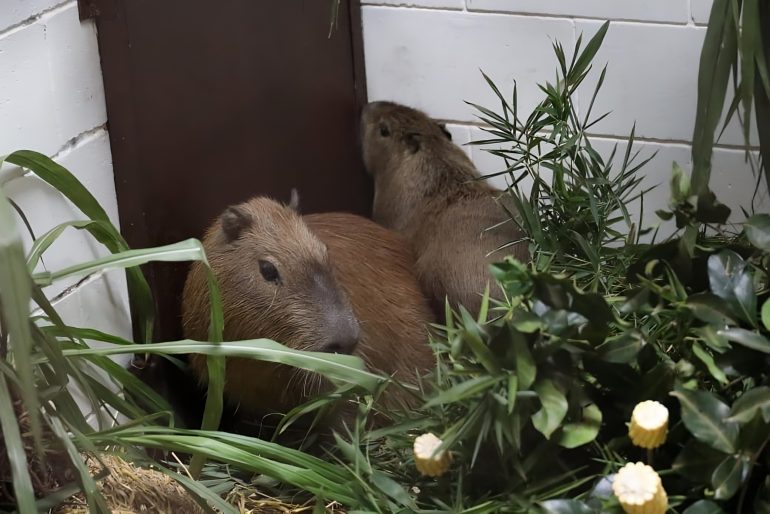Three new residents arrived at Itaipu’s Tekotopa Environmental Centre. Three capybaras, named Juky, Pyta, and Pincho, were transferred from the Atinguy Wildlife Refuge, managed by the Yacyretá Binational Entity (EBY), as part of a species exchange programme between the two hydroelectric power plants.
The capybara’s moving is part of an exchange organised by Tekotopa and EBY technicians. In return, Itaipu staff selected and sent two red macaws, or gua’a pytã (Ara chloropterus), to the Atinguy Wildlife Refuge. These birds are now under the care of refuge professionals.
Capybara quarantine and integration
Upon their arrival in Hernandarias, the capybaras received a warm welcome from the Itaipu Wildlife Animal Research Centre (CIASI) team. A special environment was prepared for them. Following this, they were placed in quarantine enclosures. Here, laboratory tests will be conducted to confirm their health status.
This quarantine procedure also safeguards the well-being of the existing Tekotopa Environmental Centre animal population, explained Santiago Molina, CIASI coordinator. After the quarantine period, the capybaras are scheduled to join the Jaguar Trail, Tekotopa’s native fauna exhibition area. This area is planned to open to the public in the future.
Capybara’s cultural significance for Paraguay
Capybaras, the world’s largest rodents, are native to South America, thriving in wetlands, marshes, and near rivers. These herbivorous, scientifically named Hydrochoerus hydrochaeris, weigh between 35-65 kilograms, and are known for their calm, social nature, often living in groups of around 10 to 20. Their barrel-shaped bodies, short tails, and webbed feet make them excellent swimmers.
In Paraguay, capybaras are culturally significant, found abundantly in the Chaco region and along the Paraguay River. They are affectionately called “carpinchos” and symbolise the country’s rich biodiversity, often featured in local folklore and as mascots, highlighting Paraguay’s connection to its natural heritage.
Animal exchange programme objectives
The capybara-macaw exchange is an important step toward enhancing biodiversity, and strengthening conservation efforts between Tekotopa and EBY, CIASI coordinator Molina explained.
“This initiative aims to exchange animals to enhance reproductive strategies for species managed by both institutions,” Molina said. “For us, as Itaipu, it is important to collaborate in this way to strengthen our joint work for wildlife conservation.”


